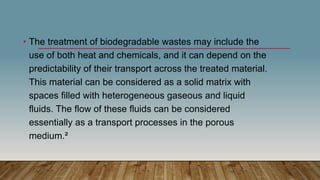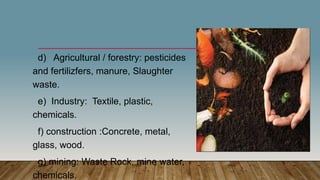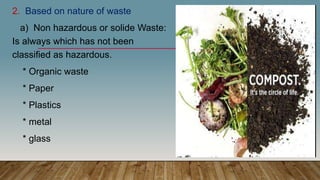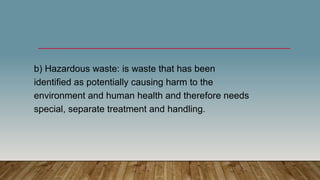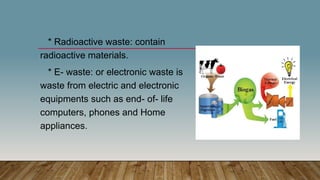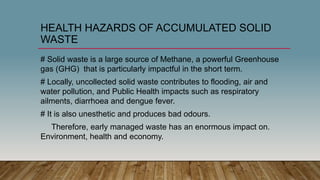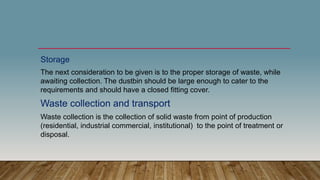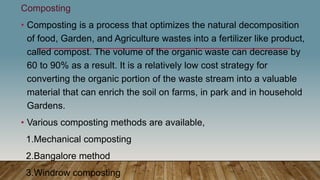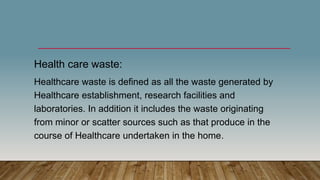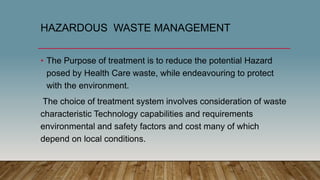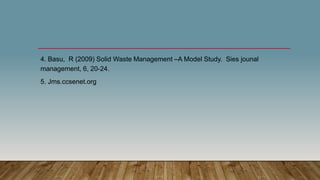Biodegradable waste comes from many sources and includes household, medical, agricultural, industrial, and construction waste. It is classified as non-hazardous or solid waste and hazardous waste. Improper waste management poses health and environmental risks like pollution and disease. Effective management involves reducing, reusing, recycling, and disposing of waste safely through methods like composting, incineration, and landfilling. Segregation and proper storage, collection, transport, and treatment are important for reducing waste impacts.






